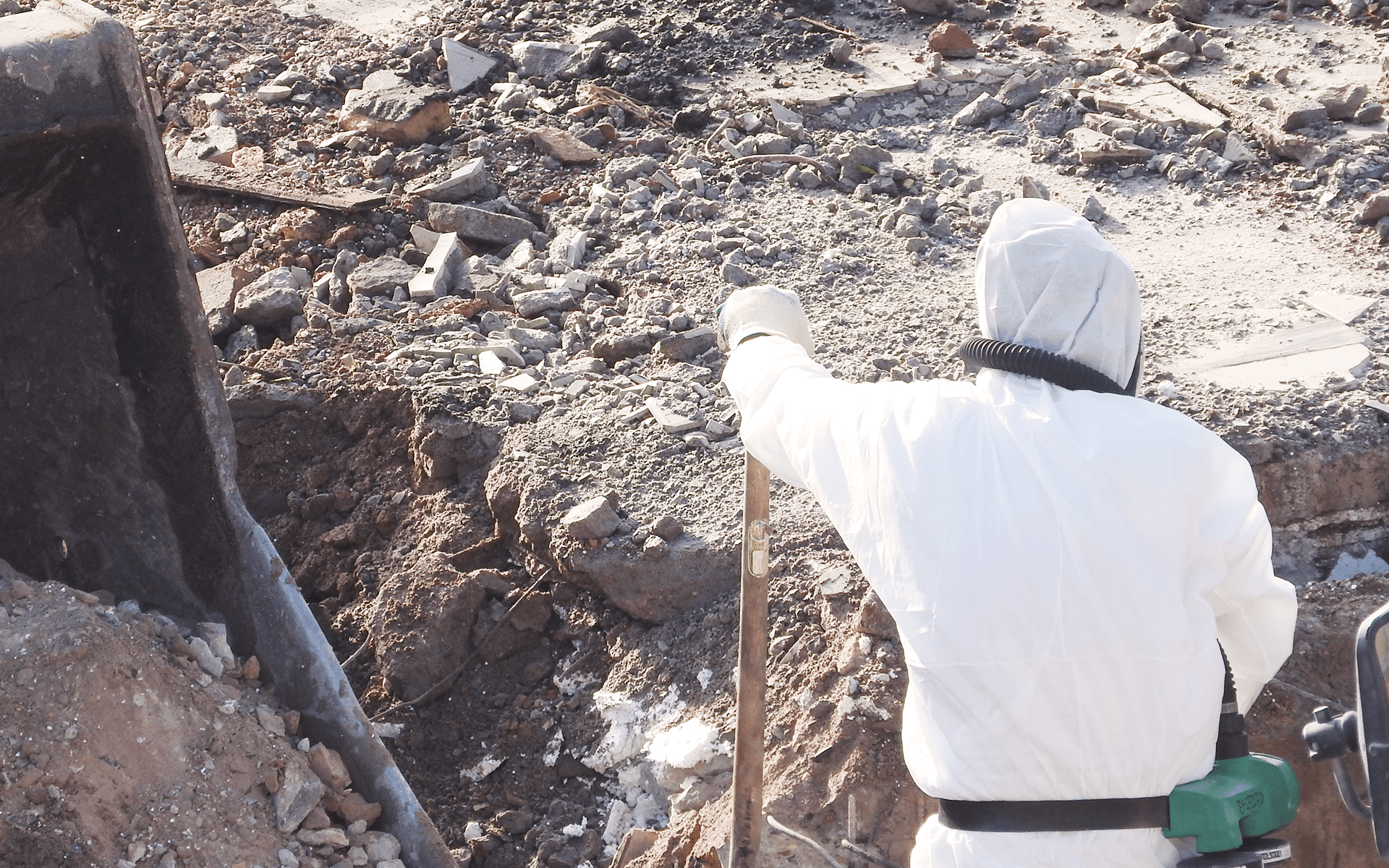Where Is Asbestos Found?
Asbestos is a carcinogenic mineral that was widely used in the United States due to its strength and heat-resistance. The fibrous material can be naturally discovered in rock and soil, and was widely used by every military branch in housing, vehicles, bases, and other equipment and products.

What’s Asbestos?
Asbestos is a carcinogenic (known to cause cancer) mineral, but where’s it found? The mineral was initially discovered where it occurs naturally in rock and soil. This fibrous element was once prevalent in the construction of a wide range of manufactured goods, mainly due to its durability and heat resistance.
The Environmental Protection Agency (EPA) has made several steps toward banning the mineral in the United States. In 1989, there was a partial ban on the distribution, import, production, and processing of asbestos-containing materials. That same year, the EPA abolished new uses of the mineral to stifle production. Despite this, ships used by the U.S. Coast Guard were built with asbestos as recently as 1991. As of April 2019, the EPA passed the Final Rule, designed to ensure that banned products don’t return to the market.
Where’s Asbestos Found in the Military
Veterans are at risk for exposure if they’ve worked in certain places or occupations during their time of service. Some of the higher-risk military occupations were mining, milling, insulation, demolition, and construction. Those in the Navy and Coast Guard are at the highest risk due to their labor in shipyards and engine rooms. Army vehicles, aircraft, and military barracks were also built with asbestos and pose a threat to veterans. Additionally, service members who’ve served in Iraq, and other countries around the Middle East and Southeast Asia, could’ve come into contact with the mineral when buildings were damaged, and the fibers were expelled into the air.
Veterans who were diagnosed with mesothelioma may be eligible for VA compensation. To find out if you qualify, speak with a patient advocate today.
Where’s Asbestos Found in the Workplace?
Between 1940 and 1979, approximately 27 million workers in the U.S. were exposed to aerosolized asbestos fibers, a much more substantial amount than today. This fact makes it much more likely that workers in the following occupations were exposed to the carcinogen. Veterans and civilians alike who worked in any of the following occupations are at risk of exposure:
- Auto mechanics
- Boilermakers
- Bricklayers
- Building inspectors
- Carpenters
- Construction and demolition workers
- Drywallers
- Electricians
- Furnace workers
- Insulators
- Ironworkers
- Laborers
- Longshoremen
- Maintenance workers
- Operating engineers
- Painters
- Pipefitters
- Plasterers
- Plumbers
- Roofers
- Refinery workers
- Sheet metal workers
- Shipyard workers
- Steamfitters
- Welders
A veteran who’s worked in these occupations should visit a doctor to assess the likelihood of exposure and development of a related illness. The earlier the diagnosis, the more there is a chance for successful treatment.
Where’s Asbestos Found in the Environment?
The mineral can be found in rock and soil, but there are other places where it can be found in the environment. Not only does the mineral occur naturally in certain types of rock, but usage of the carcinogen has caused it to release fibers into the air and disperse throughout soils in the area. The following are at risk for contamination:
Air and Dust, Water, and Vermiculite
The production, wear, and disposal of asbestos materials will cause the fibers to expel into the air, creating the risk of exposure by inhalation. Mining and milling around asbestos, as well as the natural weathering of asbestos-bearing rock, can also cause the fibers to be expelled into the air and settled dust nearby.
Fibers can also be spread to water through erosion of natural land sources, abandoned mines and mill tailings, cement pipes containing the mineral, and disintegrating other asbestos-containing elements transported by rainwater.
A naturally-occurring mineral composed of shiny flakes, vermiculite is lightweight and also fire-resistant. Vermiculite itself does not cause illness, but 70 percent of all vermiculite handled in the United States from 1919 until 1990 was contaminated by asbestos, making the mineral a considerable risk. Vermiculite has been used in several easily-accessible products, including wall insulation.
Contaminated Products
Due to the exuberant use of the mineral in a wide variety of products, especially before 1975, it’s been found in homes, schools, and even vehicles. Veterans working with or around any of the following materials may be at risk:
- Boilers and heating vessels
- Cement pipe
- Clutch, brake, and transmission components
- Coatings and sealants
- Curtains and textiles
- Electrical wire conduits
- Electric motor parts
- Heat-protective pads
- Insulation products
- Laboratory equipment
- Paper items
- Pipe
- Roofing materials
Some materials are still being used today. These are:
- Automobile clutches
- Brake pads
- Imported cement pipe
- Roofing materials
- Vinyl tile
As long as asbestos remains undisturbed, there’s much less risk for inhalation or ingestion, as the fibers need to become airborne for this to happen. If automobiles, homes, or school structures undergo repairs, remodeling, construction, or demolition, those involved or nearby are at much more substantial risk of exposure.
Veterans with mesothelioma can take action without affecting their benefits.

Related Conditions
If the mineral’s toxic fibers are inhaled or ingested, they’ll stay lodged in lung tissue for several years, causing scarring and inflammation. This activity can lead to several types of related illnesses and diseases. Some conditions include:
Asbestosis, Lung Cancer, and Mesothelioma
Asbestosis illness occurs when extensive exposure causes scarring of the lung tissue.
Lung Cancer occurs after an uncontrolled growth of abnormal cells materializes in one or both lungs.
Mesothelioma cancer develops in a thin layer of tissue that covers most of your mesothelium or internal organs.
Pleural Effusion and Pleural Plaques
Pleural effusion is a condition that occurs when there’s an excessive fluid buildup between the layers of tissue around the lungs and chest cavity.
Pleural Plaques occur when there is prolonged exposure to asbestos; sometimes, it can cause a buildup of chalky material in the pleura.
What’s Next?
Asbestos usage has gone down significantly, but not entirely. The EPA’s made steps toward eliminating the carcinogen, but there’s still a way to go because the mineral is still found in various capacities. If you’ve worked or frequented these asbestos products or occupations, it could be a good idea to visit your doctor, as early detection goes a long way.
You don’t have to go through this alone. If you or a fellow veteran or loved one has received a mesothelioma diagnosis or other asbestos disease diagnosis due to exposure during the time of service, you could be entitled to compensation. Learn more about veteran benefits and other legal compensation options for veterans and their families.


